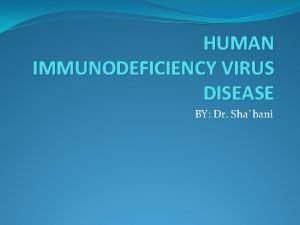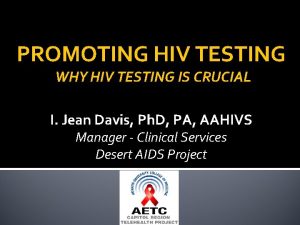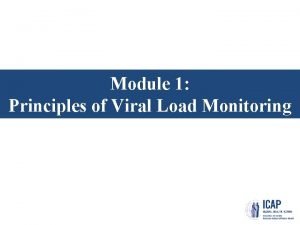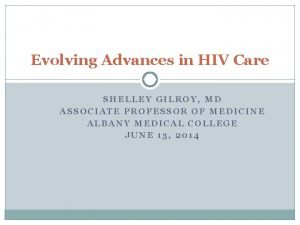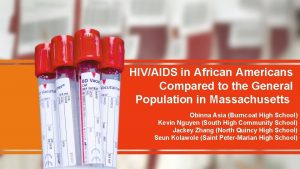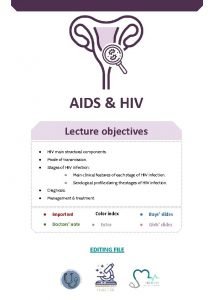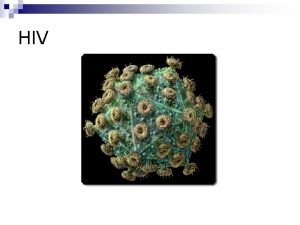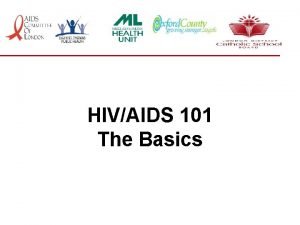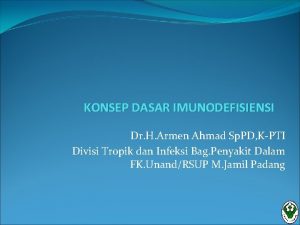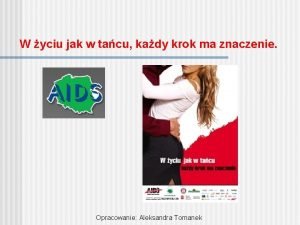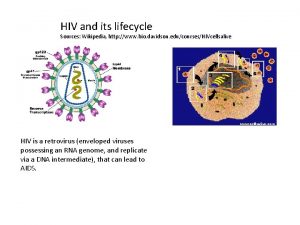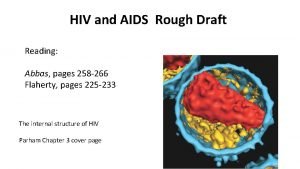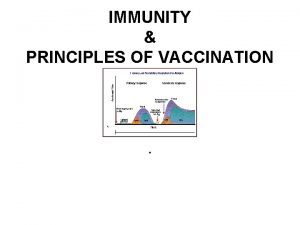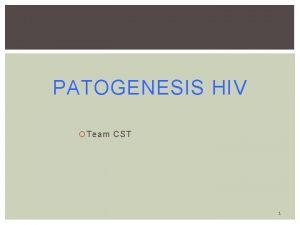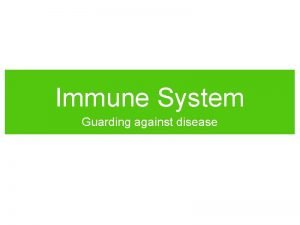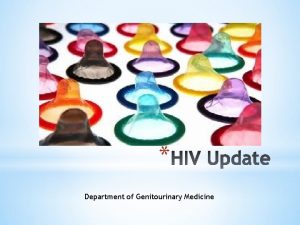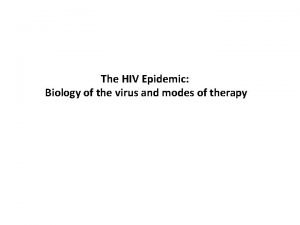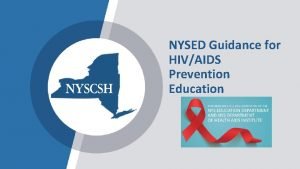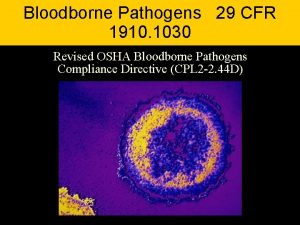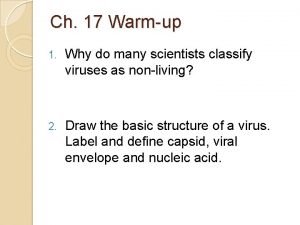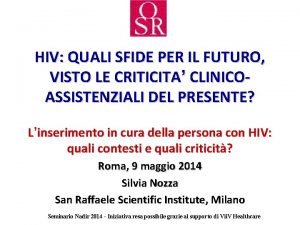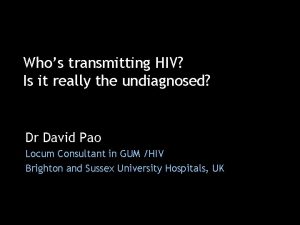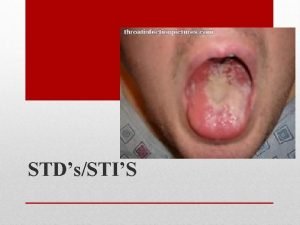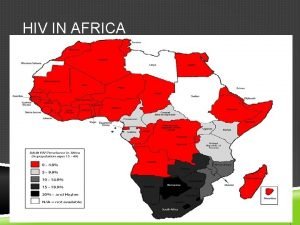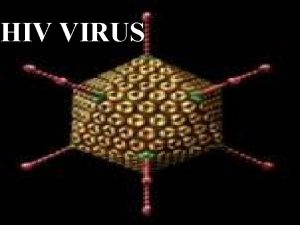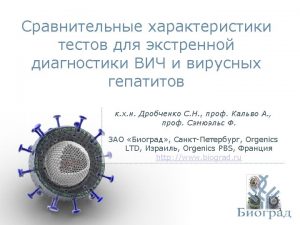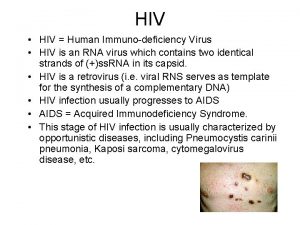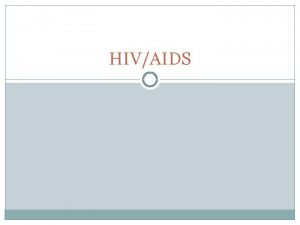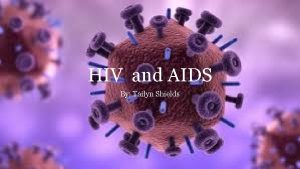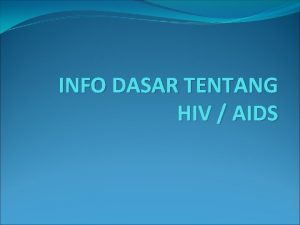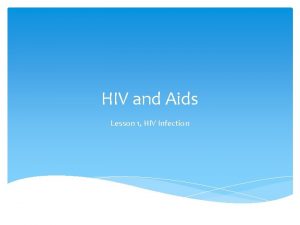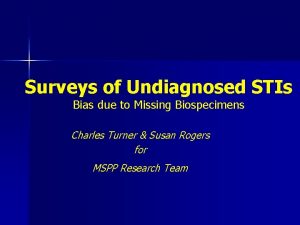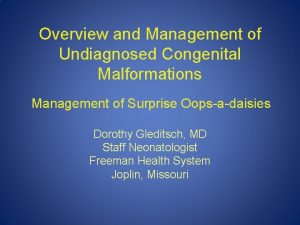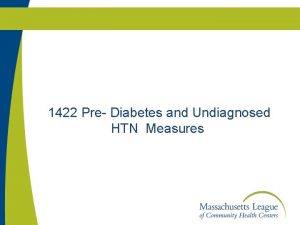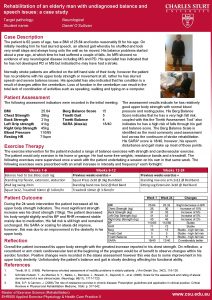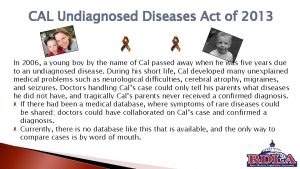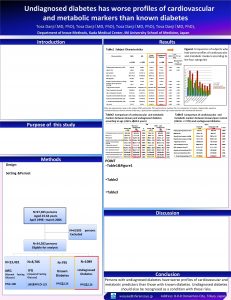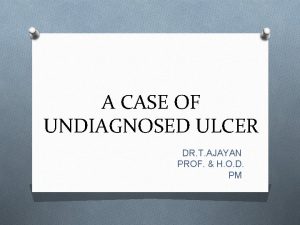STDsSTIS HIV Most STDIS Go undiagnosed Having an




























- Slides: 28

STD’s/STI’S HIV

Most STD/I’S • Go undiagnosed • Having an STI increases your risk of HIV infection • Have periods of time where the person is symptomless and therefore you can unknowingly transmit them • Half of all STI’s occur in people under the age of 25 • One in 4 in cases happen in teenagers • The age group 15 -24 has 5 times the normal rate of Chlamydia, 4 times the normal rate of gonorrhea, and 3 times the normal rate of syphilis

1 in 2 SEXUALLY ACTIVE Young people Will get An STD/I By the age of 25 MOST Will not know it

Types of STD/I’s • • • Human Papillomavirus (HPV) Chlamydia Pelvic Inflammatory Disease (PID) Gonorrhea Genital Herpes Syphilis Hepatitis B Trichomoniasis /Bacterial Vaginosis Pubic Lice Human Immunodeficiency Virus (HIV)

STI Data in Milwaukee

What puts Teens at a higher risk? ? • More likely to have multiple, sequential, or concurrent sex partners, rather than single long term relationships • More likely to engage in unprotected sexual intercourse • They select partners that are at higher risk “IF YOU DON’T TAKE RESPONSIBILITY FOR YOUR SEXUAL HEALTH, WHO WILL? ?

STDI REPORT USE EITHER OF THESE TWO WEBSITES: cdc. gov or iwannaknow. org Create a power point answering the following questions about your STI. It should be one slide per question, you may add pictures as long as I approve. No genitalia! Answer the following questions regarding your STI • What is it? • How common is it? • How do people get it (method(s) of transmission)? • What are the symptoms? • What are the complications if not treated? • How does it affect the pregnant women and or the baby? • What is the treatment?

Categories of STD/I’s • Virus: Smallest known pathogen. No known cure, can only treat the symptoms. Examples Genital warts, genital herpes, hepatitis, HPV and HIV • Bacteria: Single celled microorganism. Cured by antibiotics. Examples: Chlamydia, syphilis, gonorrhea, vaginitits. • Other Protozoan/parasites: Single celled organism. Cured by special medicated shampoos, and some oral medications. Examples: Trichomoniasis, pubic lice, scabies.

HIV/AIDS Pre Test 1. Which statement best describes the relationship between HIV and AIDS? • a. HIV and AIDS are the same thing. • b. HIV can be cured but AIDS cannot be. • c. HIV is the virus that causes AIDS. • d. HIV has no relationship to AIDS. • • • 2. Which of these statements about HIV infection is true? a. HIV attacks cells of the immune system. b. HIV can be detected with a blood test. c. HIV can lead to AIDS if untreated. d. All of the above

j 3. Who is most likely to get infected with HIV? a. People who have unprotected sex. b. Gay men. c. People who donate blood. d. People who get blood transfusions from donors. 4. What do people with HIV look like? a. They are usually sick and frail. b. They are usually well-groomed and strong. c. They are usually like everyone else. d. They are usually poor and shabby. 5. What is the relationship between sex and alcohol use? a. Alcohol makes sex better. b. Alcohol reduces a person’s interest in sex. c. Alcohol kills germs so condoms aren’t necessary. d. Alcohol reduces a person’s ability to make good decisions about sex.

6. How can the risk of an HIV infection be reduced? a. Use a condom for sex every time. b. Avoid injection drugs. c. Abstain from sex and drugs. d. All of the above. 7. Which of the following activities cannot transmit HIV? a. everyday activities like talking, hugging, going to a movie b. having unprotected sex with a regular partner c. sharing needles to shoot drugs d. All these activities are risky. 8. Which of these statements about HIV infection is true? a. With medication, a person can live a fairly normal life. b. Death occurs within months of HIV infection. c. Medications can eliminate HIV from the body. d. The HIV infection quickly spreads to the brain.

9. Which of these statements about women with HIV is true? a. They become sterile and cannot have children. b. They have difficulty becoming pregnant. c. They always pass HIV to their babies. d. They can have a baby that does not have an HIV infection. 10. What does the HIV test look for? a. the virus itself b. antibodies to the virus c. cells in the immune system d. signs that the immune system is very weak

HIV/AIDS STATS • In 2009 alone, there were an estimated 2, 078 new cases of HIV infection in 13 - to 19 -year-olds and 6, 314 new cases in 20 - to 24 year-olds. • In 2007, HIV was the ninth leading cause of death for African. Americans of all ages and the third leading cause for African. American men and women between the ages of 35 and 44. • The Centers for Disease Control (CDC) report that 20 percent of reported new HIV infections in 2009 are in people under 25. • In 2009 in the US, 90 percent of the HIV infections in 13 - to 19 -yearolds were the result of sexual intercourse. • In the US in 2009 almost one-quarter of new HIV cases in 13 - to 19 year-olds were female. In young people between the ages of 20 and 24, females made up 19 percent of all HIV cases. • were infected. . • —Sources: Centers for Disease Control and UNAIDS

• In 2009 approximately 35 million people worldwide were living with HIV/AIDS. This is a decrease from 2002, when an estimated 42 million people worldwide were living with HIV/AIDS. More than 70 percent of these people live in Sub. Saharan Africa. • Worldwide, more than 80 percent of all adult HIV infections have resulted from heterosexual intercourse. • Approximately 50, 000 new HIV infections occur in the United States each year; about 70 percent among men and 30 percent among women. • Through the end of 2008, approximately 617, 000 people have died from AIDS in the US. • Approximately 1, 000 people were living with HIV infection or AIDS in the US at the end of 2008. Of these an estimated 21 percent did not know they

What is HIV? • Human Immunodeficiency Virus that causes aids HIV damages the bodies immune system, thus causing AIDS People typically die from complications of a secondary infection or disease • How does HIV become AIDS HIV destroys a certain type of blood cell CD 4+T cells

HIV/AIDS Facts • HIV can be transmitted through: Blood Semen or Pre-seminal fluid Vaginal fluid Breast Milk HIV can enter through a vein, the lining of the anus or rectum, the lining of the vagina or cervix, the opening of the penis, the mouth or other mucus membrane. It cannot enter through intact, healthy skin. It is not found in saliva, tears, sweat, urine , feces, vomit or nasal secretions unless blood is present. • Most common ways it is transmitted Unprotected Sex (anal, oral or vaginal) Sharing needles Mother to baby at birth or breast milk

Special Cases • KISSING— Only one case of AIDS has ever been attributed to open-mouth kissing. However, because of the potential for contact with blood during open-mouth kissing, never practice this activity with someone who is infected. • SPITTING or BITING— Although saliva contains a very minor amount of HIV, it also contains a protein that works to destroy the virus. The amount of HIV in saliva is not high enough to make spitting or biting a common risk. • HEALTHCARE WORKERS— Investigations into more than 22, 000 patients of 63 HIV-infected doctors and dentists have resulted in only one demonstrated case of HIV transmission. • SHARED UTENSILS— There is an extremely remote chance for HIV transmission, and only if blood is involved, such as from a cut in the mouth. • TEARS and SWEAT— These fluids do not contain enough HIV to cause infection.

HIV Cannot Be Transmitted Through • Casual contact (social kissing, shaking hands, coughing, sneezing, swimming pools, bathrooms, eating utensils, drinking fountains)

How does HIV cause AIDS? HIV destroys a certain kind of blood cell—CD 4+ (also called T cells or helper cells)—that is crucial to the normal functioning of the human immune system. Reducing the amount of the virus in the body with anti-HIV drugs can slow this destruction of the immune system. Do new medicines cure AIDS? No. HIV infection and AIDS are not curable. However, new medications are available which slow the rate at which HIV replicates. Combined with a healthy lifestyle, these medications can postpone or prevent the development of AIDS. How do I know if I’m infected with HIV? The only way to determine for sure whether you are infected is to be tested for HIV infection. Most people who are infected with HIV do not have any symptoms at all for many years. Symptoms can appear 10 years or more after infection.

What are the symptoms of HIV infection? • The following symptoms may occur with HIV infection: • rapid weight loss • dry cough • recurring fever or profuse night sweats • profound and unexplained fatigue • swollen lymph glands in the armpits, groin, or neck • diarrhea that lasts for more than a week • white spots or unusual blemishes on the tongue, in the mouth, or in the throat • pneumonia • memory loss, depression and other neurological disorders

How long does it take for HIV to cause AIDS? Scientists have estimated that about half the people infected with HIV develop AIDS within 10 years after becoming infected. This time varies greatly from person to person and can depend on many factors, including a person’s health care and lifestyle.

How can I tell if I have HIV • Blood test • It takes 3 to 6 months after you are exposed to develop the detectable antibodies that tell if you have HIV • Dr. Office, STD clinics, Family planning services, HIV testing sites WHO SHOULD BE TESTED • Men who have unprotected sex with other men • People who share needles • People with several sexual partners • People who already have another STI • Infants born to HIV positive mothers • People who are significantly exposed to another person’s blood and they have open wounds, or exposure to open areas

HIV Statistics

WHERE CAN I GET MORE INFO? • • • Wisconsin AIDS line: 1 -800 -334 -AIDS Spanish speaking AIDS line: 1 -800 -344 -7432 Red Cross AIDS service organizations in Milwaukee On the Web Wisconsin AIDS/HIV Program Centers for Disease Control National Prevention Information Network

BLOOD LINES DVD

RED LIGHT – GREEN LIGHT ACTIVITY • RED LIGHT = HIGH RISK ACTIVITY • YELLOW LIGHT = MODERATE RISK ACTIVITY • GREEN LIGHT = LOW RISK ACTIVITY

High Risk Behaviors for getting HIV • • • Anal Intercourse without a condom Sharing needles for injecting drugs, etc. . Vaginal intercourse without a condom Anal intercourse with internal ejaculation with a condom Vaginal intercourse with a condom and internal ejaculation Sharing needles for tattooing, or piercing Breast feeding by an infected mother Unprotected oral sex Cleaning blood spills with no barrier

Low Risk Behaviors • • Blood spills with barriers Mutual masturbation Deep wet kissing Dry kissing Hugging and massage Self-masturbation Donating blood Mutually monogamous relationships with an uninfected partner • ABSTINENCE
 -carcinoma
-carcinoma Dr shabani
Dr shabani Negative hiv test result
Negative hiv test result Hiv transmissions
Hiv transmissions Hiv siv
Hiv siv Hiv diagnosis algorithm
Hiv diagnosis algorithm Hiv risk factors
Hiv risk factors Incubation period of hiv
Incubation period of hiv Hiv in adults
Hiv in adults What does hiv stand
What does hiv stand Program nasional akreditasi rumah sakit
Program nasional akreditasi rumah sakit Stadium hiv
Stadium hiv A bacterial std that usually affects mucous membranes
A bacterial std that usually affects mucous membranes Procentowe ryzyko zakażenia hiv
Procentowe ryzyko zakażenia hiv Hiv life cycle wikipedia
Hiv life cycle wikipedia Hiv life cycle
Hiv life cycle Hiv vaccinr
Hiv vaccinr Igéje szól igéje hív
Igéje szól igéje hív Pola progresi penyakit typical progressor berlangsung mulai
Pola progresi penyakit typical progressor berlangsung mulai Dot
Dot Hiv lifecycle
Hiv lifecycle Retrovrus
Retrovrus Leukopenia
Leukopenia Hiv reverse transcription
Hiv reverse transcription Types of hiv counselling
Types of hiv counselling Hiv treatments
Hiv treatments Hiv stays alive in dried blood
Hiv stays alive in dried blood Hiv retrovirus
Hiv retrovirus Fiebig hiv
Fiebig hiv

